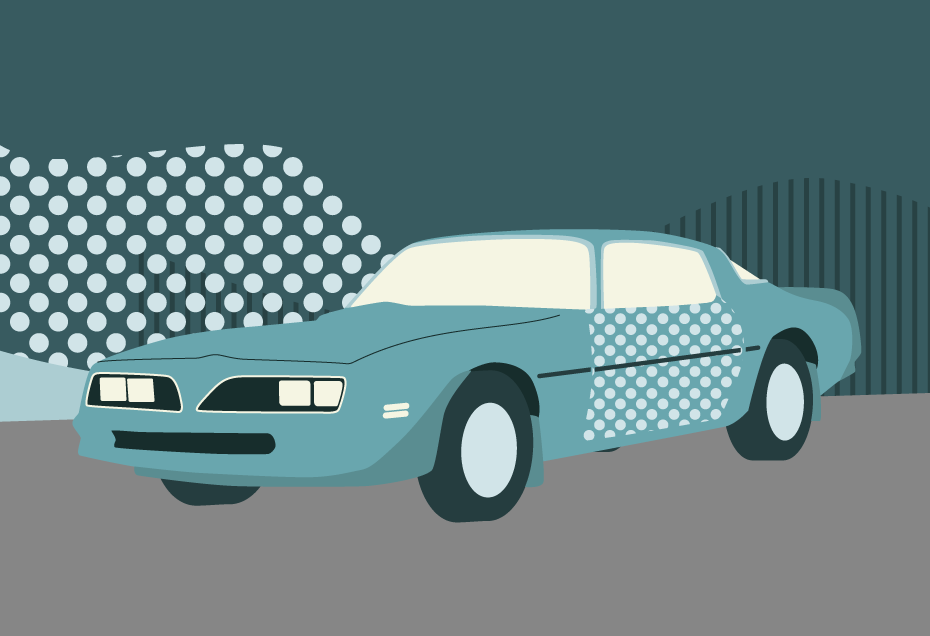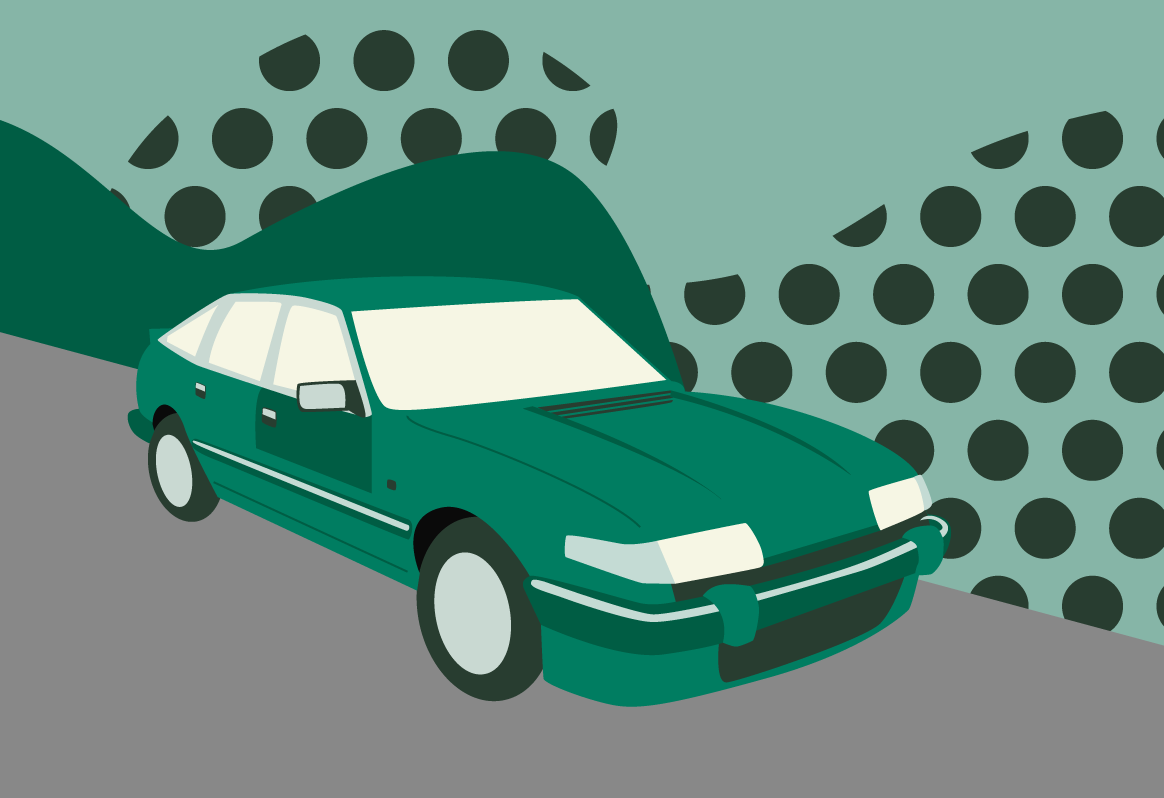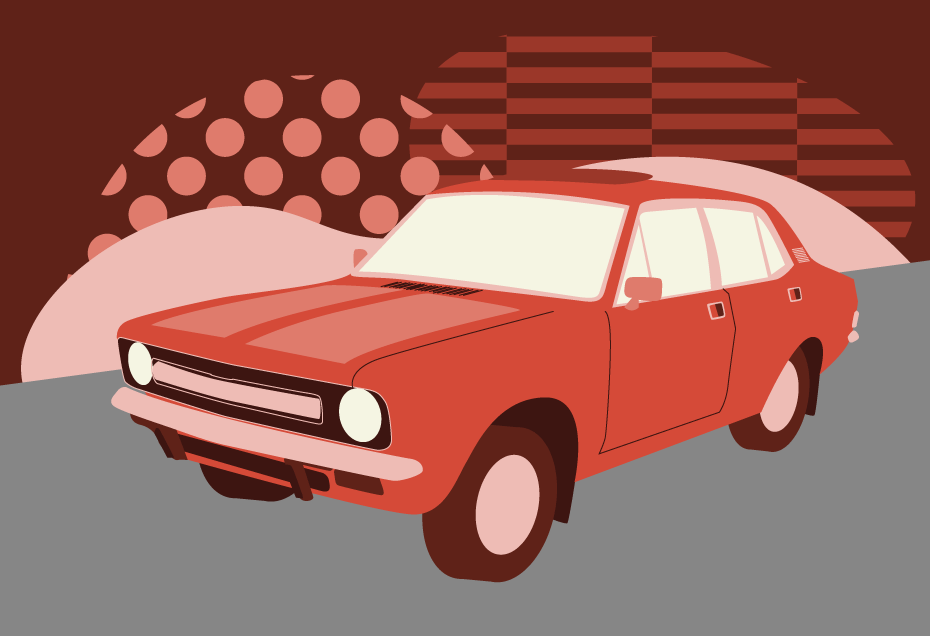Back in the ‘70s, the Pontiac Firebird Trans Am was the poster car for a generation of young American petrolheads.
Its appearance in Smokey and the Bandit, with Burt Reynolds at the wheel, propelled the Trans Am and its huge ‘Screaming Chicken’ bonnet graphic to superstardom.
This is the story of one of America’s greatest pony cars, focusing on its early years.
It all began in 1966, when General Motors (GM) decided that Pontiac should have its own pony car based on the Chevrolet Camaro’s F-body platform.
John DeLorean, Pontiac’s general manager, had been far more keen on a two-seat sports car along the lines of the Banshee concept first unveiled in 1964.
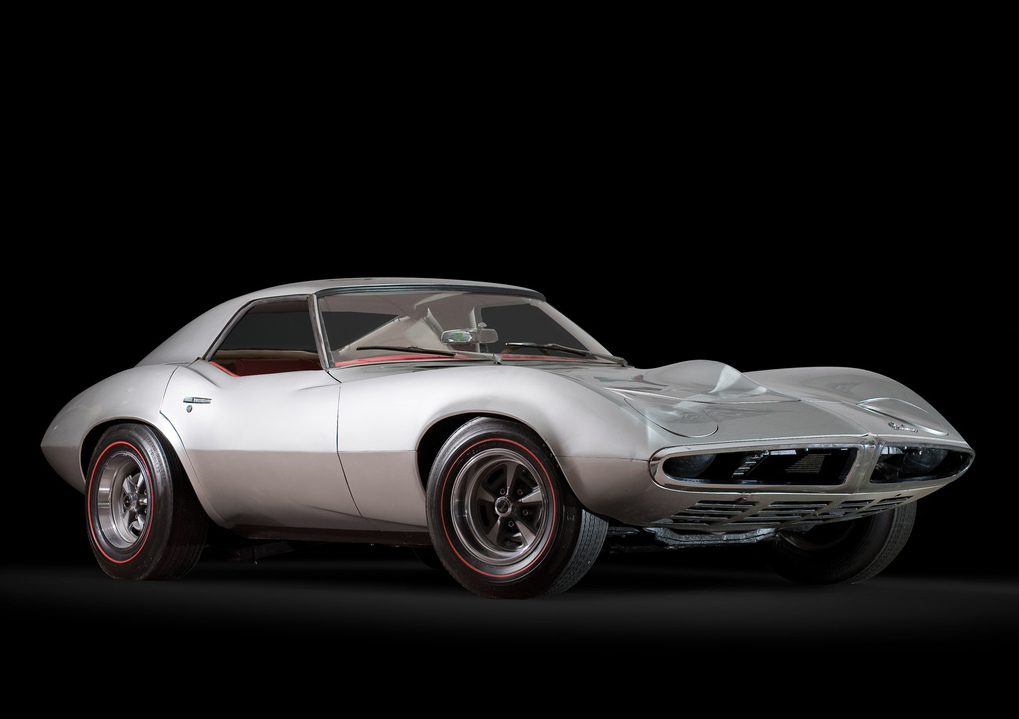
But GM bosses were nervous that, if produced, the concept would eat into the Chevrolet Corvette’s sales, and DeLorean decided to make the most of his new pony car.
Birth of the Firebird
DeLorean tasked Pontiac’s engineers to come up with a better car than the Camaro’s proposed high-performance Z/28 model – he was determined to make Pontiac the performance marque for GM.
Although based on the Camaro’s platform, the Firebird – as the new car was christened – was a totally new design, and used different engines.
With Coke-bottle styling, the Firebird differed from its sister car with integrated front bumpers, giving it a more streamlined look.
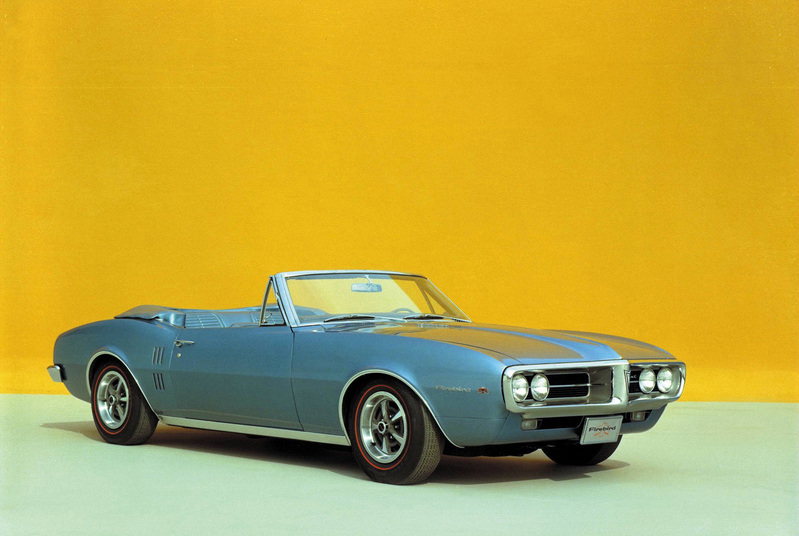
DeLorean was a big fan of the Pontiac 3.8-litre, DOHC inline six cylinder engine and, to extract more power, engineers improved the intake and exhaust systems.
The base car at launch for the 1967 model year was fitted with a one-barrel carb good for 165hp, but a Sprint option with a four-barrel carb pumped out nearer 220hp.
However, most buyers opted for one of three V8s – either two or four-barrel carb 5.3-litres producing 250hp and 285hp respectively, or the 325hp 6.6-litre unit from the Pontiac GTO.
Engines were enlarged for 1968, the most powerful on offer the Ram Air IV 6.6-litre unit providing 345hp and 430lb ft of torque.
Introducing the Trans Am
In March 1969, the first Trans Am got off to a fairly inauspicious start as a roughly $1,000 option called the ‘Trans Am performance and appearance package’.
Named after the Trans Am racing series – which the car never actually competed in – there was no fanfare and no advertising, but the car was quietly effective with its distinctive polar white paintwork with twin blue racing stripes.
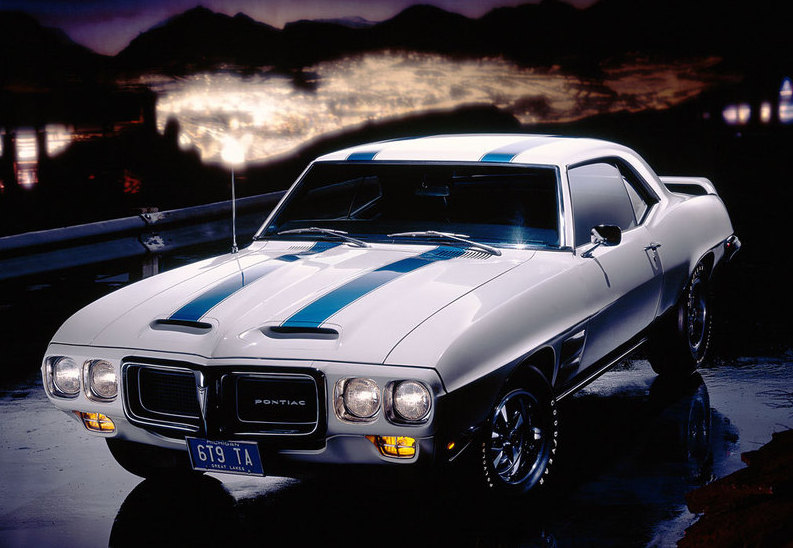
The first Trans Am was fitted with the 6.6-litre V8 with Ram Air induction, and the cars were fitted with a one-inch front stabiliser bar, a heavy-duty suspension system, variable-ratio power steering and seven-inch rims.
The hood, exclusive to the Trans Am, had functional air inlets that could be closed by the driver, while rear-facing fibreglass wing scoops covered holes designed to vent the engine bay.
Adrian Flux American car insurance
A full-width rear spoiler further gave the car a sporting appearance and, while out and out performance was similar to a standard Firebird, the Trans Am handled significantly better.
Just 689 hardtops and eight convertibles were made in the first year of production.
Firebird Trans Am second generation
The second generation of Firebirds represented a major step forward in styling as the ‘60s Coke-bottle was out in favour of a longer nose and fast-sloping rear profile for the 1970 cars.
The front end was more aggressive, and dispensed with the twin headlights for large single units flanking a large split grille.
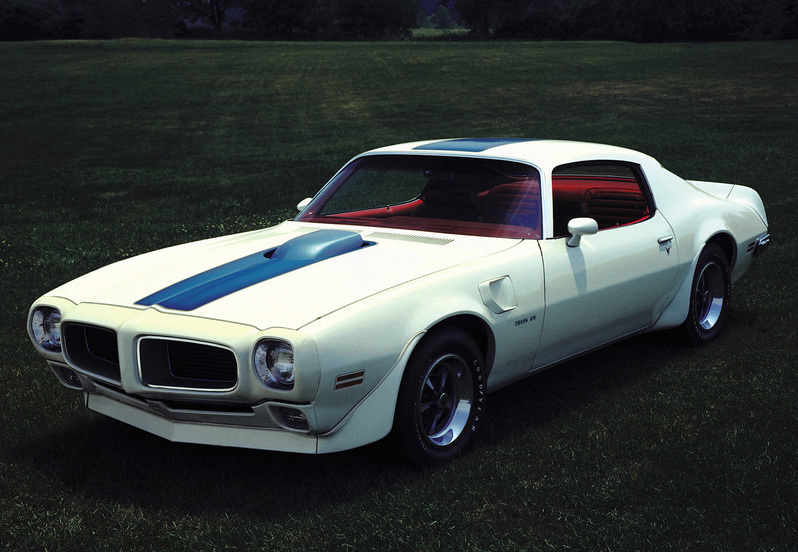
Unlike the first generation, the Firebird only came as a coupe until the convertible was re-introduced in 1989.
But the Trans Am’s future was, for a while, up in the air as Pontiac’s Trans-Am racing ambitions were shelved. With no obvious competition link, the company’s marketers had doubts about the benefit of continuing with the model.
Thankfully, they did, and the Trans Am lived on.
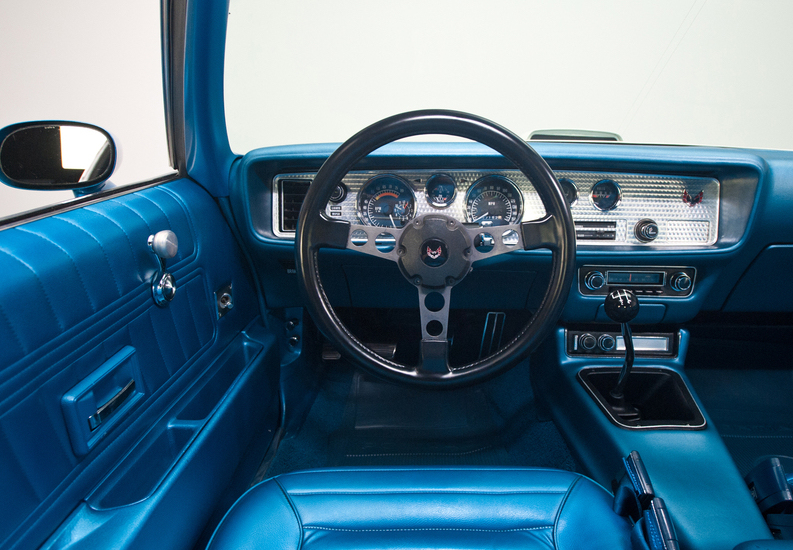
Under the bonnet, sporting a functional rear-facing shaker scoop, the ‘70 cars were offered with the 335hp 6.6-litre Ram Air III V8 or the 345hp Ram Air IV, which was exclusive to the Trans Am.
Just 3,196 Trans Ams were built in the first year of production out of a total of just under 49,000 Firebirds.
Huge V8 for 1971 Trans Am
While the external appearance of the ‘71 Trans Am was largely unchanged, there was a big change under the bonnet with the introduction of Pontiac’s monster 7.5-litre V8.
This was a response to GM’s new emissions policies, which required a reduction in compression ratios for existing engines.
The 455 High Output unit was created by borrowing the cylinder heads and camshaft from the previous year’s Ram Air 400, allied with the aluminium intake manifold from the Ram Air IV.
With compression down from 10.5:1 on the older engines to 8.4:1, it didn’t equate to more power, but the new engine was more reliable and, with 480lb ft of torque at a usable 3600rpm, it packed a real punch.
Trans Am and the ‘screaming chicken’
Whatever you want to call it – ‘screaming chicken’, ‘firebird’, ‘rising phoenix’, or simply ‘hood bird’ – there’s no doubt that the Trans Am’s outsized bonnet graphic quickly became an icon of ‘70s design.
Officially, it was the ‘RPO WW7 Hood Decal’, available as a $55 option on the 1973 Trans Am – and it very quickly became popular.
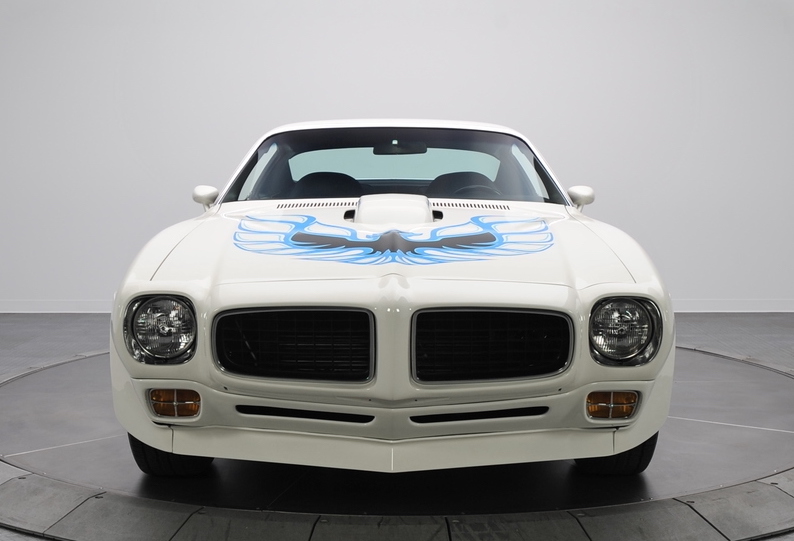
Designed by young artist Norm Inouye in 1970 at the request of his boss Bill Porter, GM’s design guru Bill Mitchell took an instant dislike to the giant bird when he saw it in the paintshop.
It was the sheer size that Michell objected to, and smaller versions did appear on the nose of Trans Ams from 1970 to 1972.
When John Schinella took over from Porter to work on the Trans Am’s visuals for 1973, he ditched the bonnet stripes, introduced two new colours – red and green – and began to resurrect the idea of the large bird decal.
He drove around town in a Firebird Formula with the decal on the bonnet and was blown away by the reaction – everyone wanted a screaming chicken on their Pontiac.
There was still some pushback from GM management, but Shinella succeeded in persuading them to give the bird a try where Porter had failed.
The bird evolved over the years, increasing in size and including more elaborate wing designs, and it would remain an option on the Trans Am in one form or another for more than a decade.
Facelifts and weight gains
The Firebird gained a new shovel-nose front end for 1974, and also piled on the pounds thanks to mandatory 5mph impact bumpers and other safety measures.
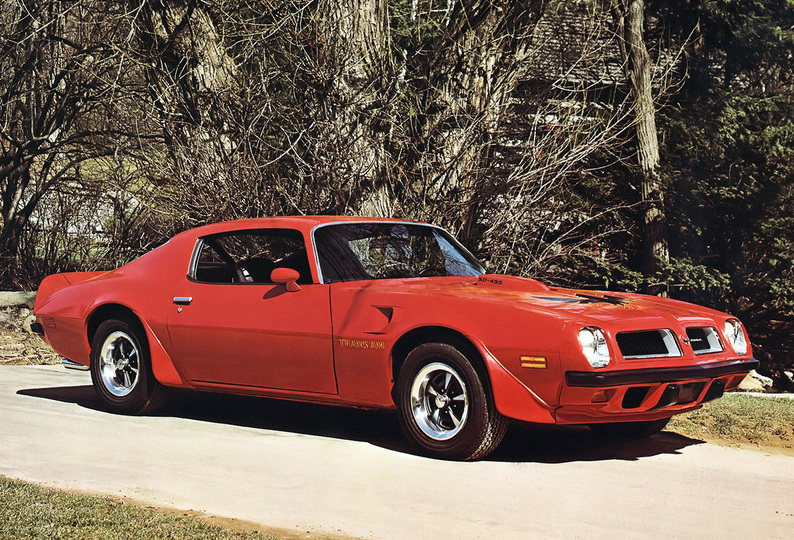
Emissions regulations affected the car’s power output, and 1976 marked the last year of the L75 7.5-litre 455 V8, which could no longer meet the tighter rules.
But that year also saw the introduction of a special colour scheme to mark the 50th anniversary of the marque.
Pontiac unveiled a special edition black Trans Am with gold trim at the ‘76 Chicago Auto Show, a colour combination that would become iconic the following year.
Like our illustration of the Pontiac Firebird Trans Am: an American icon at the beginning of the article?
Download a free high-quality poster version here.
Trans Am and Smokey and the Bandit
When most people think of the Pontiac Firebird Trans Am, they think of that black and gold colour scheme, the huge screaming chicken, and Burt Reynolds behind the wheel in the hit 1977 movie Smokey and the Bandit.
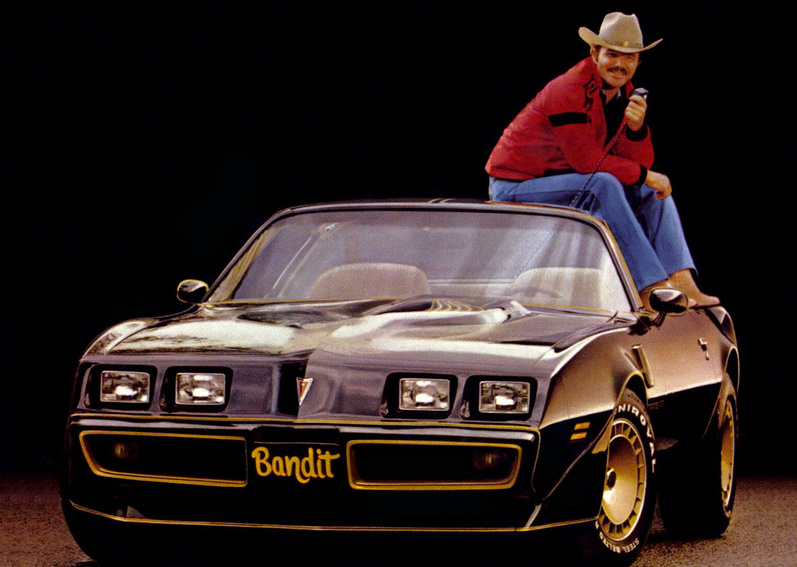
Writer and director Hal Needham, an experienced Hollywood stuntman, had seen a Trans Am featured in a magazine and became desperate to feature the car in his new film, about two bootleggers illegally transporting beer across America.
Needham persuaded GM to let him have four cars, all of which were needed to complete filming after three were completely destroyed during stunts and the fourth only just made it to the end of shooting.
The cars supplied were necessarily mongrels – 1976 cars with the redesigned 1977 facelift that would be on sale at the time of the film’s planned release date.
Therefore, the most famous Trans Am of them all would feature the new quad headlamps, redesigned nose cone, and lower-profile shaker scoop.
Power was well down on earlier Trans Ams, with the optional W72 6.6-litre V8 now delivering 200hp and maximum torque of 325lb ft at 2,400 rpm – again all down to power-crushing anti-pollution controls.
After a slow start, Smokey and the Bandit proved to be a sleeper hit, eventually grossing $300m worldwide, second only to the other big hit of 1977 – Star Wars.
Things couldn’t have worked out better for Pontiac, with a large spike in sales directly as a result of the car’s starring role.
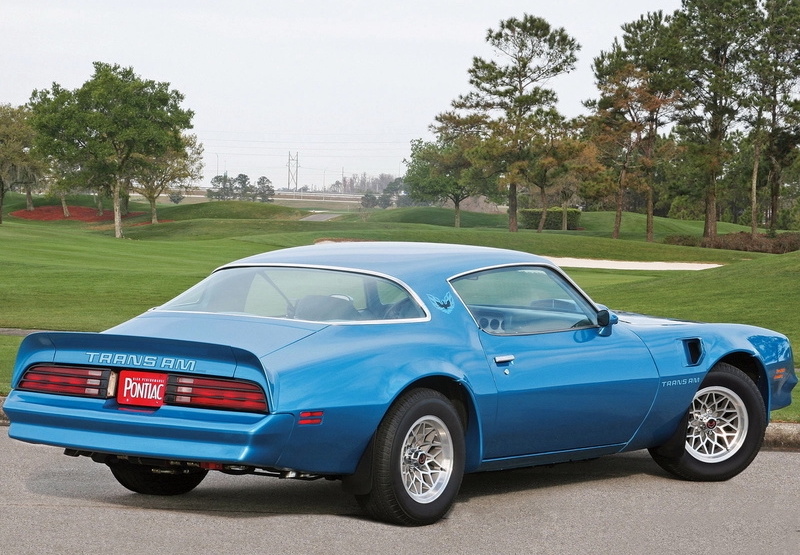
Sales were already healthy in 1977, with 68,745 units sold, but 1978 saw a jump to 93,351, and a further rise to 117,108 the following year, overtaking the Camaro in popularity.
In fact, sales were so good, Pontiac held off the introduction of the third generation until 1982, two years later than planned.
Smaller engines and more Bandit fun
By 1980, ever more stringent emissions regulations in the US saw Pontiac drop all of its large displacement engines, with the 4.9-litre V8 (301 cu in) now the standard unit, with no manual transmission available.
Options included a Garrett turbo-charged 301, or the Chevy small block 305 (5-litre), with peak power of 200hp.
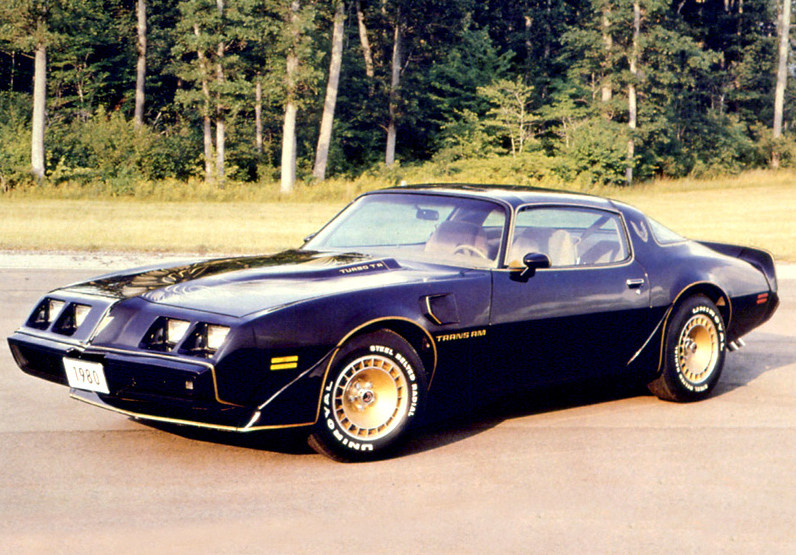
Not surprisingly, given its success, Pontiac offered eight turbo 301 Trans Ams to Needham when he asked for some cars to appear in Smokey and the Bandit 2, released in August 1980.
The car was fitted with nitrous oxide tanks to provide the necessary performance for the movie.
Although not as successful as the original, the sequel still grossed $66m and kept the Trans Am in the public eye.
Trans Am, the final 20 years
By the time the all-new third generation Firebird Trans Am appeared in 1982, Pontiac had fully embraced the new regulations, with a more aerodynamic shape and fuel-injected engines.
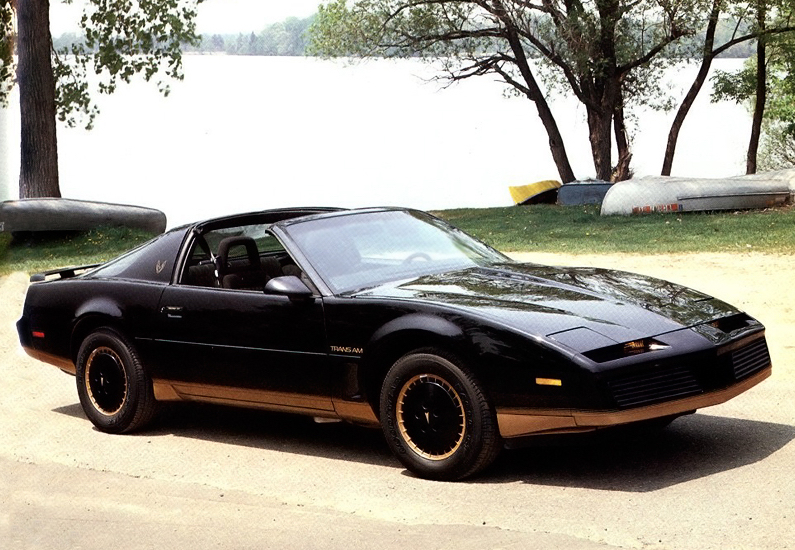
It was also lighter and handled better, and the injected Chevy 5-litre V8 could hit 60mph in under 10 seconds.
A modified version of the 1982 car appeared as the autonomous car, KITT, in the TV series Knight Rider, which ran from 1982 to 1986.
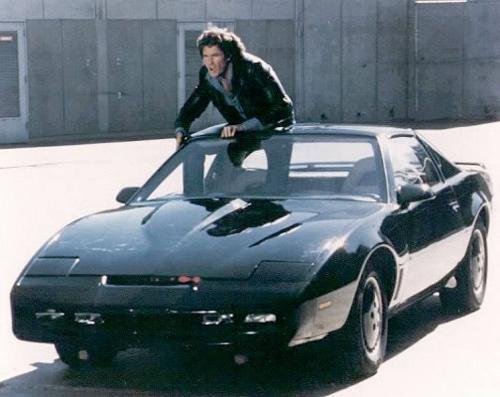
The ‘screaming chicken’ was no more…
The last Trans Am ran from 1993 until 2002, mostly featuring a derivative of the Corvette’s 5.7-litre V8, producing 325hp.
A variety of special editions proliferated during its last years, including a GT version in 1994, and 25th and 30th anniversary editions in ‘94 and ‘99.
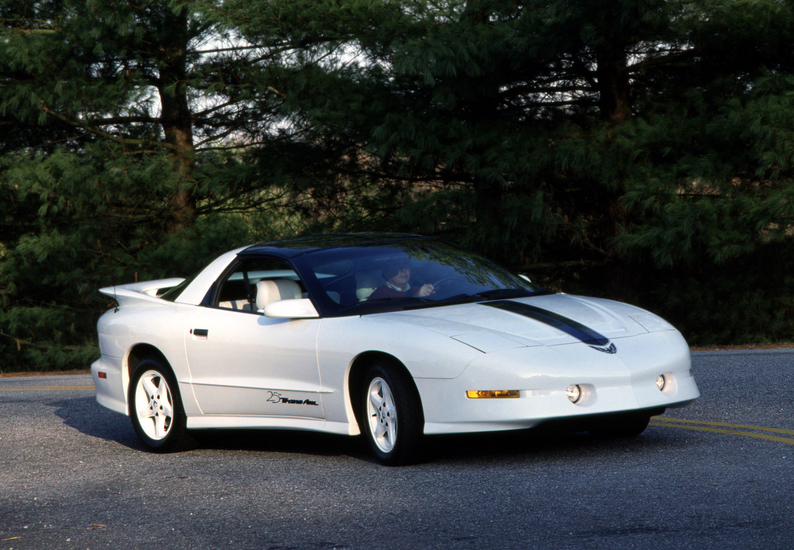
For its last hurrah, a collector’s edition Trans Am was available in yellow as a convertible or T-top coupe, with black painted alloy wheels, and twin black stripes from hood to tail.


